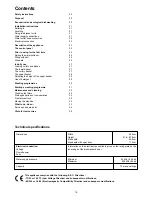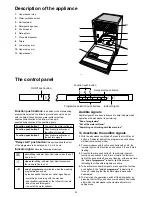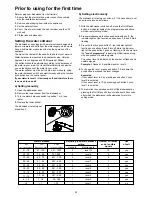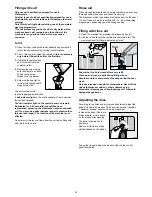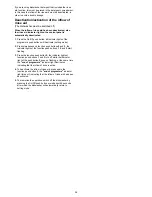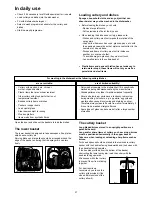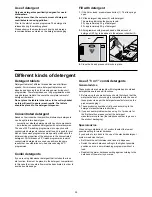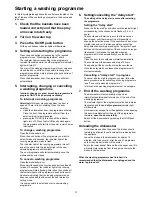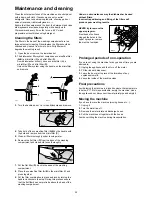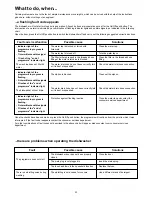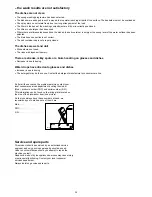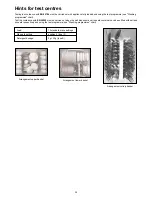
32
Clean the external surfaces of the machine and control panel
with a damp soft cloth. If necessary use only neutral
detergents. Never use abrasive products, scouring pads or
solvent (acetone, trichloroethylene etc....).
Ensure that the seals around the door, the detergent and rinse
aid dispensers are cleaned regularly with a damp cloth.
We recommend every 3 months to run a 65°C wash
programme without dishes using detergent.
Cleaning the filters
The filters in the base of the washing compartment are to a
large extent self-cleaning. Nevertheless the filters should be
checked and cleaned from time to time. Dirty filters will
degrade the washing result.
1. Open the door, remove the lower basket.
2. The dishwasher filter system comprises a coarse/fine filter
(A/B), a microfilter (C) and a flat filter (D).
Some dishwasher will only have a coarse filter (A), a
microfilter (C) and a flat filter (D).
Unlock the filter system using the handle on the microfilter,
and remove.
3. Turn the handle about
1
/
4
a turn anticlockwise and remove.
4. Take hold of the coarse/fine filter (A/B) by the handle with
the hole and remove from the microfilter (C).
5. Clean all filters thoroughly under running water.
6. Remove the flat filter (D) from the base of the washing
compartment and clean both faces thoroughly.
7. Put the flat filter (D) back in the base of the washing
compartment.
8. Place the coarse/fine filter (A/B) in the microfilter C) and
press together.
9. Put the filter combination in place and lock by turning the
handle clockwise to the stop. During this process ensure
that the flat filter does not protrude above the base of the
washing compartment.
Under no circumstances may the dishwasher be used
without filters.
Incorrect repositioning and fitting of the filters will
produce poor washing results.
NEVER try to remove the
upper spray arm.
If residues of soil have
clogged the holes in the
upper spray arm, remove
them with a toothpick.
Prolonged periods of non-operation
If you are not using the machine for any period of time you are
advised to:
1. Unplug the appliance and then turn off the water.
2. Fill the rinse aid dispenser.
3. Leave the door ajar to prevent the formation of any
unpleasant smells.
4. Leave the inside of the machine clean.
Frost precautions
Avoid placing the machine in a location where the temperature
is below 0°C. If this is unavoidable, empty the machine, close
the appliance door, disconnect the water inlet pipe and empty it.
Moving the machine
If you have to move the machine (moving house etc....):
1. Unplug it.
2. Turn the water tap off.
3. Remove the water inlet and discharge hoses.
4. Pull the machine out together with the hoses.
Avoid over tilting the machine during transportation.
Maintenance and cleaning
MA36
MA35
MA32
MA31
MA40


